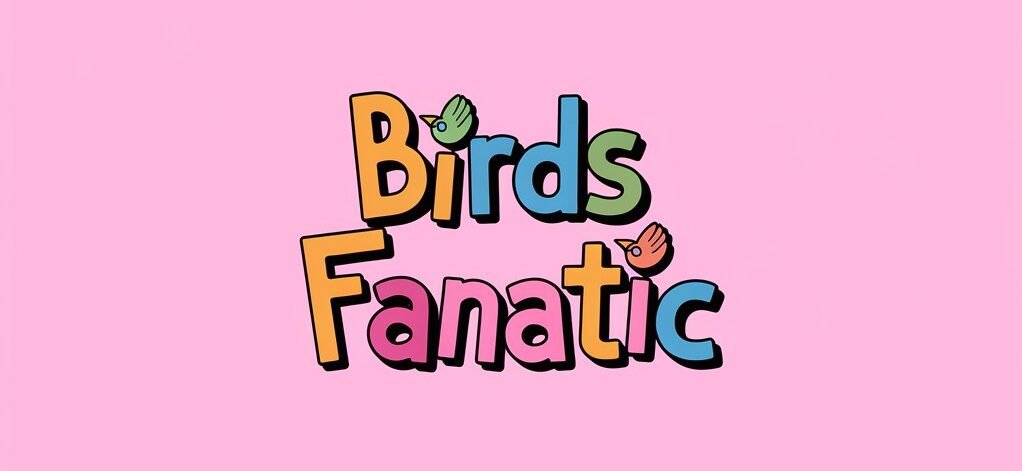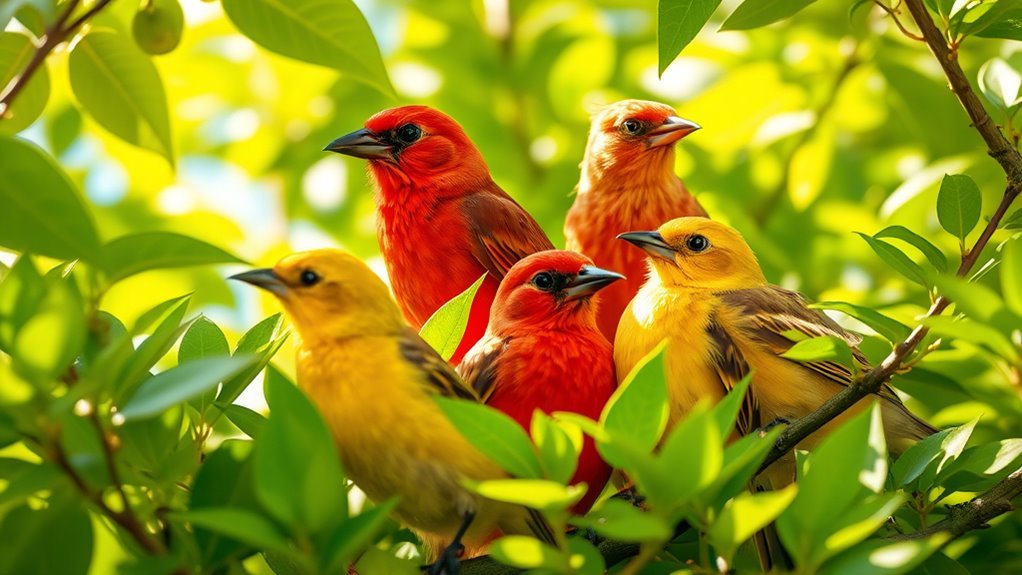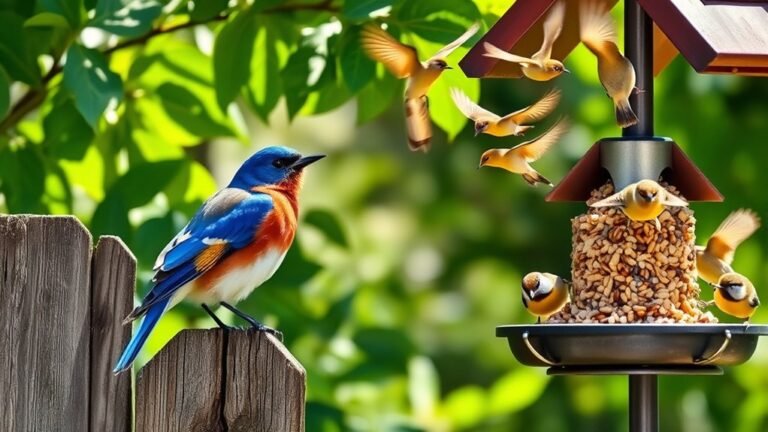Red and Yellow Birds: A Colorful Overview
Red and yellow birds have bright colors that help them survive and communicate. Birds like the Northern Cardinal and American Goldfinch showcase vivid feathers and interesting behaviors, especially during mating season. Their colors indicate their health and attract mates. These features also influence how they interact with other birds and their habitat. Understanding these aspects can give us insights into their roles in nature and their social lives.
Key Takeaways
- Red and yellow birds are known for their bright colors and unique behaviors, capturing the attention of birdwatchers and nature enthusiasts alike.
- Notable species include the Northern Cardinal, American Goldfinch, and Scarlet Macaw, each exhibiting distinct traits and habitats.
- These birds often showcase vibrant colors for mate attraction and territory establishment, especially during breeding seasons.
- Social behaviors, such as flocking and vocalizations, enhance their charm and interactions, particularly during spring.
- Understanding their habitat preferences and behaviors fosters a deeper appreciation for these colorful avian species.
Overview of Red and Yellow Birds

Red and yellow birds captivate us with their bright colors and unique behaviors. These birds have specific habitat needs and thrive in forests and grasslands.
They often show complex social behaviors, especially during breeding. Many use their colorful feathers to attract mates. The bright colors indicate strength and health, helping birds find partners and establish territory.
Learning about these birds helps us appreciate their beauty and understand their roles in nature. This knowledge strengthens our connection with birds and the environment around us.
Northern Cardinal: The Iconic Red Bird
The Northern Cardinal is a bright red bird known for its striking appearance. Male cardinals display vibrant red feathers, which represent energy and liveliness in bird symbolism.
You can find them in dense woodlands, gardens, and areas with shrubs, as they prefer habitats that provide food and shelter. Cardinals thrive in places such as forest edges and suburban areas. Their sweet song fills the air, making them easy to spot.
American Goldfinch: A Splash of Yellow

The American Goldfinch stands out with its bright yellow feathers. This small bird is common in North American backyards. Its presence adds color and joy to our surroundings.
Here are some key facts about the American Goldfinch:
- Diet: Goldfinches mainly eat seeds from plants such as thistles and sunflowers. These seeds provide the energy they need.
- Nesting: They build nests in shrubs, using plant materials for safety and comfort.
- Color Change: Male goldfinches are bright yellow in summer but turn olive-brown in winter.
- Social Behavior: Goldfinches sing cheerful songs and often travel in flocks, making them delightful to watch.
Observing these birds not only reveals their beauty but also connects you to nature's diversity.
Scarlet Macaw: A Tropical Gem
The Scarlet Macaw is a beautiful bird representing tropical avian diversity. These birds live in Central and South America, mainly in rainforests, lowland forests, and mangroves.
Their bright red, yellow, and blue feathers help them recognize each other and interact with other Scarlet Macaws.
Scarlet Macaws eat a varied diet. They mainly consume fruits, nuts, seeds, flowers, and leaves. This diet benefits their health and helps the ecosystem by dispersing seeds.
Learning about their behavior and habitat increases our appreciation for these remarkable birds.
Yellow Warbler: The Brightly Colored Songster

The Yellow Warbler is a bright songbird found in North America. It has vibrant yellow feathers and sings melodic tunes. Birdwatchers enjoy listening to its cheerful song, especially in spring during the breeding season.
Here are some key facts about the Yellow Warbler:
- Its song sounds cheerful and whistled.
- It flies nimbly through low bushes and shrubs.
- Its olive-green back looks nice against its yellow body.
- It helps control insect populations and pollinate plants.
Watching the Yellow Warbler adds joy to birdwatching and enhances your connection to nature.
Red-Shouldered Hawk: a Raptor With Color
The Red-Shouldered Hawk is a medium-sized bird of prey known for its striking colors. It has vibrant chestnut and gray feathers that make it stand out.
You can often see these hawks sitting on a high perch, looking for movement on the ground. They hunt using a method called "perch-and-pounce," where they watch closely and then dive to catch small animals, like rodents and frogs.
The hawk's call is distinctive and can be heard in wooded areas.
Watching a Red-Shouldered Hawk hunt showcases its skills as a predator. This experience allows viewers to appreciate the beauty and power of nature.
Crimson-collared Tanager: A Central American Beauty
As you explore the beautiful landscapes of Central America, the Crimson-collared Tanager stands out with its vibrant colors.
This bird lives in different environments, especially in open woods and near moist areas. You can often see these colorful tanagers in small groups, showing interesting feeding habits. Their diet mainly consists of fruits, seeds, and insects, which helps support local ecosystems.
Here are key points about the Crimson-collared Tanager:
- Habitat: They're common in lowland forests and plantations.
- Appearance: Males have bright red and black feathers, while females are more subdued in color.
- Sounds: Their calls are unique and pleasant to hear.
- Groups: They like to flock together, which promotes social interactions.
Enjoy observing these stunning birds and their lively behavior in their natural habitat!
Pine Grosbeak: A Winter Wonder
The Pine Grosbeak stands out in winter landscapes. These birds thrive in coniferous forests, especially in northern boreal areas. Their habitat provides shelter during cold winters.
They prefer regions with spruce, pine, and fir trees, which supply food for their survival.
Pine Grosbeaks mainly eat seeds and fruits from conifer cones. They also enjoy berries when they're available.
Their ability to adjust their diet with the seasons is important for their survival. This adaptability makes them interesting to birdwatchers and nature lovers.
Behavioral Traits of Red and Yellow Birds
When you observe red and yellow birds, you'll notice behaviors that make them unique. These colorful birds display clear patterns in how they interact with each other.
- Courtship Displays: Male birds perform aerial displays to show off their feathers and attract females.
- Feeding Behaviors: These birds have various feeding habits. Some prefer seeds, while others look for insects, showing their ability to adapt.
- Social Interactions: Many of these birds build strong bonds and often gather in flocks, which helps strengthen their social connections.
- Territoriality: During breeding seasons, they become territorial. They use calls and displays to mark their feeding areas and show dominance.
Frequently Asked Questions
What Roles Do Red and Yellow Birds Play in Their Ecosystems?
Red birds play important roles as predators and seed dispersers. They help control insect populations and spread seeds to promote plant growth. Yellow birds have unique roles in ecosystems as well. They assist in pollination and attract insects, which supports other wildlife. Together, red and yellow birds enhance habitat diversity. This diversity strengthens ecosystem stability and resilience. Their contributions are vital for a balanced environment.
How Can I Attract Red and Yellow Birds to My Garden?
To attract red and yellow birds to your garden, set up bird feeders with their favorite seeds. Use sunflower seeds and nyjer seeds as they are popular choices. Plant native flowers and shrubs that provide food and shelter. Plants like sunflowers and coneflowers attract these birds. Provide fresh water in a birdbath for drinking and bathing. Keep your garden neat and safe from predators. These steps will help create an inviting space for beautiful red and yellow birds. Enjoy watching them come to your garden!
Are Red and Yellow Birds Migratory Species?
Are red and yellow birds migratory? It varies. Some species migrate seasonally to find warmer climates or food. Learning about their migration patterns can help you understand their lives better.
What Are the Conservation Statuses of These Colorful Birds?
The conservation statuses of colorful birds show that many face serious threats due to habitat loss. This results in several species being classified as endangered. Protecting their habitats is essential for their survival and for the health of ecosystems. Creating safe environments helps maintain the diversity of bird species and supports overall biodiversity. Taking action can make a difference for these beautiful birds.
How Do Red and Yellow Colors Affect Bird Behavior?
Red and yellow colors significantly affect bird behavior. These bright colors enhance how birds see during mating rituals. Birds use these colors to attract mates. The presence of red and yellow signals good health and energy. This, in turn, affects their reproductive success and social interactions within their species.

Hello, I’m Amelia White, the founder of birdsfanatic.com. As a lifelong bird enthusiast and spiritual seeker, I’ve always been fascinated by the mystical connections between birds and the human experience. On this site, I share my knowledge and insights into the symbolic meanings and spiritual significance of various bird species, exploring their roles in mythology, folklore, and cultural traditions. Join me on this journey into the world of birds, where we’ll discover the hidden wisdom and guidance that these magnificent creatures have to offer.







